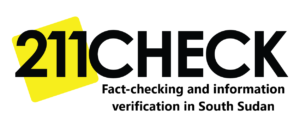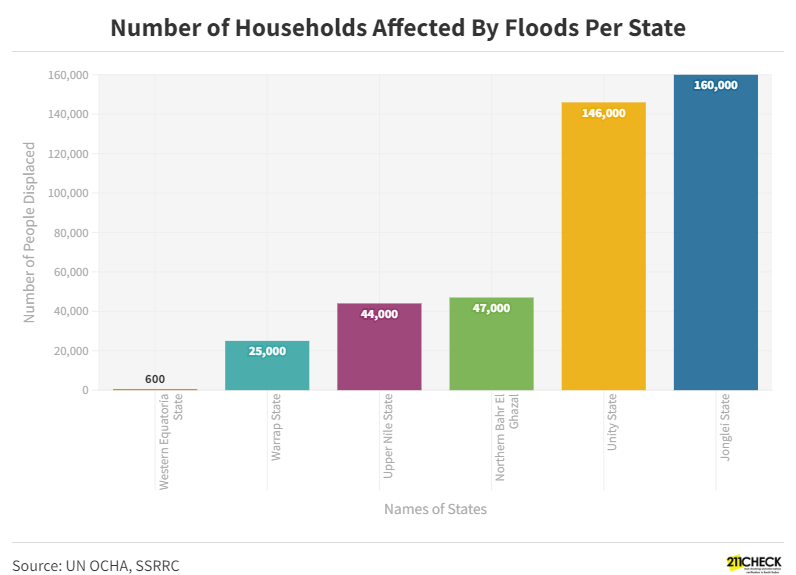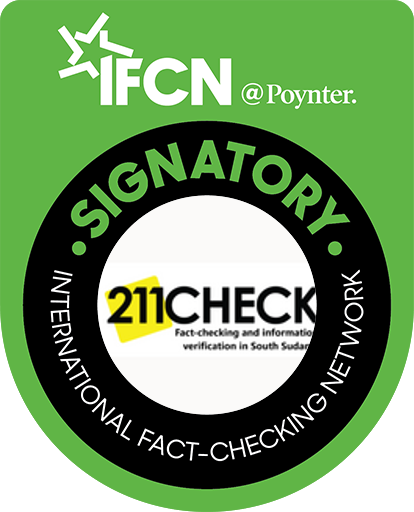Data Story: Floods, Response and Support in South Sudan – 2021
Floods displace thousands in six states across South Sudan amid limited supplies, a funding shortfall, and announcement by weathermen that water levels would continue to rise in the coming months.
By David Uku
Data collected by 211 Check according to the United Nations Office for the Coordination of Humanitarian Affairs (UNOCHA) indicates how floods affected thousands of people in South Sudan, the response, and support from NGOs during the rainy season.
South Sudan, the world’s newest country and in East Africa, gained independence from Sudan in 2011. It has been through civil war and conflict, as well as devastating floods that have affected six of the current ten states.
On October 8, 2021, the South Sudanese government approved ten million US dollars as an emergency fund for flood-affected populations throughout the country, and Michael Makuei Lueth, Minister of Information, stated in Juba that the relief package approved by the cabinet will be used to help resettle those who have been displaced from their homes, in addition to providing food relief.
“The people who are displaced are very much affected by floods, and after the floods have subsided they need to be resettled in their areas of origin because they don’t have anything at present and all that they need is to be rescued now,” he told the pressed after the weekly cabinet meeting
As of October 2021, the states most affected by flooding are Jonglei, Unity, and Northern Bahr El Ghazal, Upper Nile, Warrap, and Western Equatoria.
Statistics of Floods Affected Population Around the Country:
S/No. | State | Number of Households | Funding | Gov/NGOs |
| 01 | Jonglei State | 160,000 | $ 10,000,000 | South Sudan Government |
| 02 | Unity State | 146,000 | 1.7 billion | OCHA |
| 03 | Northern Bahr El Ghazal | 47,000 | 20 million | South Sudan Humanitarian Fund |
| 04 | Upper Nile State | 44,000 | ||
| 05 | Warrap State | 25,000 | ||
| 06 | Western Equatoria states. | 600 | ||
| UN Agency Estimated Total | ||||
| 01 | Report from UNOCHA affected by six States | 466,000 | ||
| 02 | Report from UNRefugee affected by six states | 380,000 |
Response from the and NGOs
OCHA last month warned of limited supplies and a funding shortfall, saying that it had only received 54 per cent of the $1.7 billion (1.4 billion euros) required to pay for programmers in the country.
IGAD weathermen recently announced that water levels would continue to rise in the coming months.
The Humanitarian Coordinator says it will allocate US$20 million from the South Sudan Humanitarian Fund, and part of the allocation will support flood response efforts.
The Flooding Season
Every year, heavy rainfall from April to October causes the Nile, Pibor, Sobat, Lol, and other rivers to overflow. Inland flooding was caused by the rains, and parts of the country (Jonglei State, Unity State, Northern Bahr Elghazal, Upper Nile State, Warrap State, and Western Equatoria State) were affected.
Conclusion
The government and humanitarian agencies must devise a good system for evacuating people from areas that are affected by floods during the rainy season in the country, because climate predicts that heavy rainfall will occur in the country every year from April to October.
It is too early to tell, but the coming years will be crucial in determining the seriousness of the government and humanitarian organizations in developing a good system for evacuating people from a bad place to a better place.
David Uku, a Data Speaks Fellow at #defyhatenow South Sudan, wrote this data story, which was edited by 211 Check Editor Emmanuel Bida Thomas and approved for publication by Steve Topua, Data Analyst and Trainer. It’s part of the ongoing #defyhatenow South Sudan Data Speaks Fellowship program with funding from the European Union Delegation to South Sudan.
About South Sudan Data Speaks Fellowship:
This is a two-month and half data journalism fellowship for South Sudanese content creators with an aim of educating participants on the fundamentals of data journalism through in-depth training facilitated by experienced data analysts.
The fellows have been selected from across South Sudan and they are trained in data sourcing/mining, data analysis, and data visualization for two months and half (October to Mid December)
Each fellow will produce a minimum of three (03) data stories during the fellowship. The focus will be on increasing access to information


